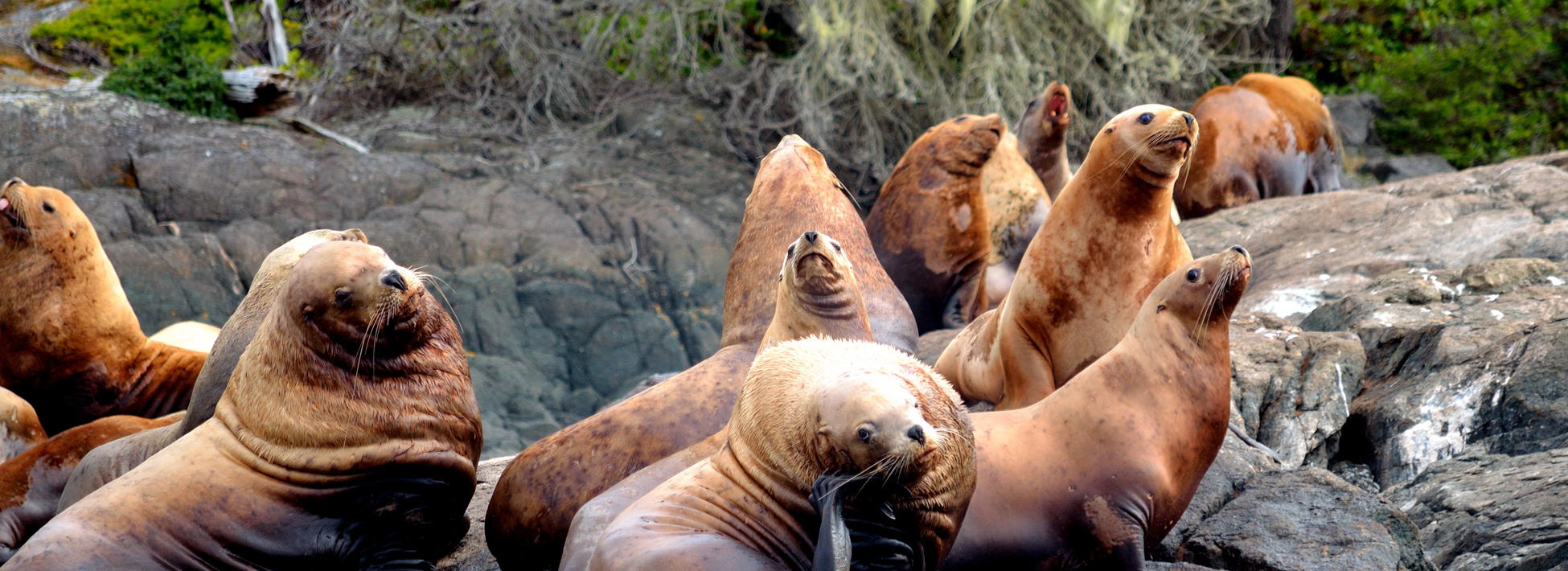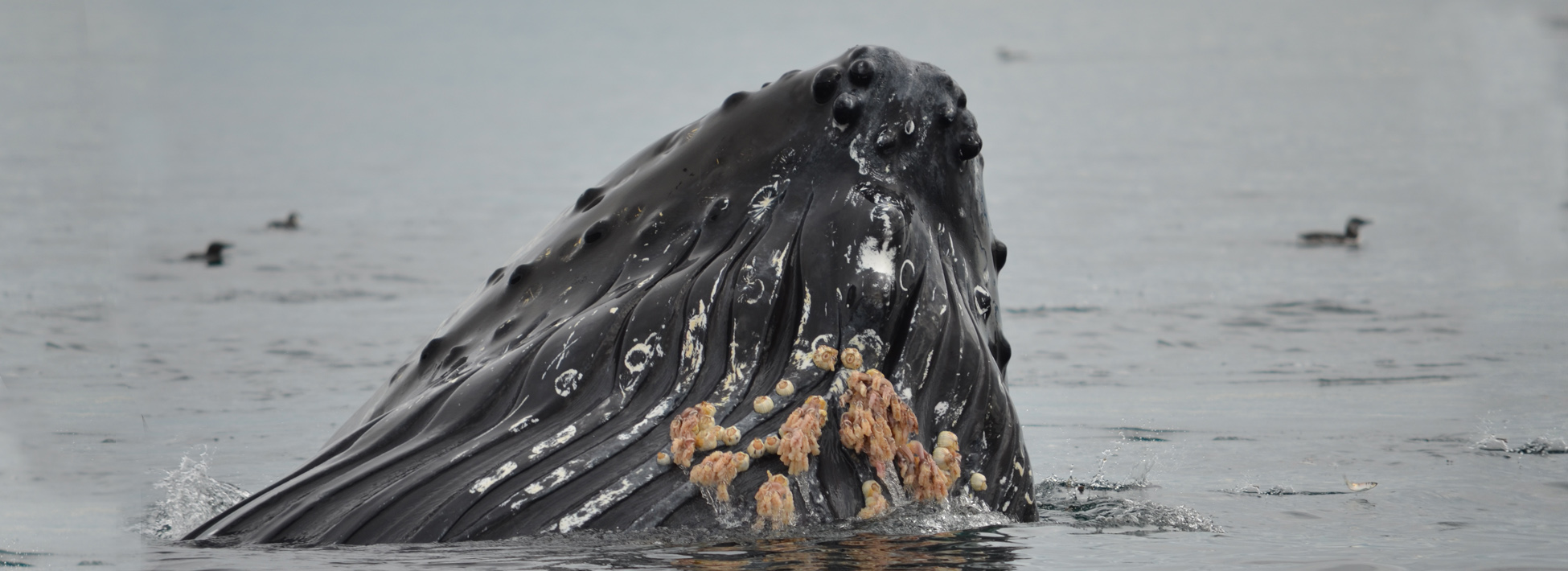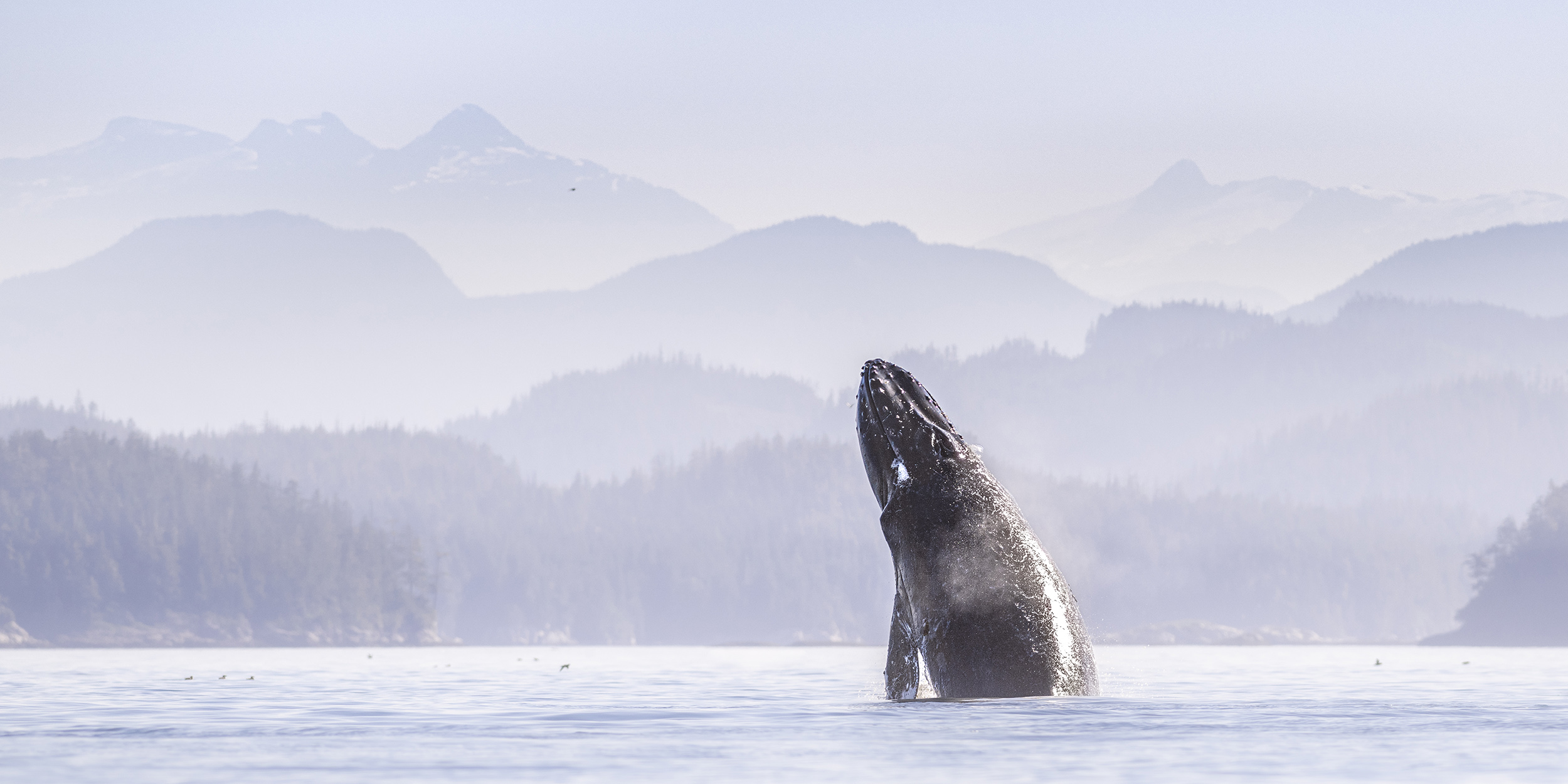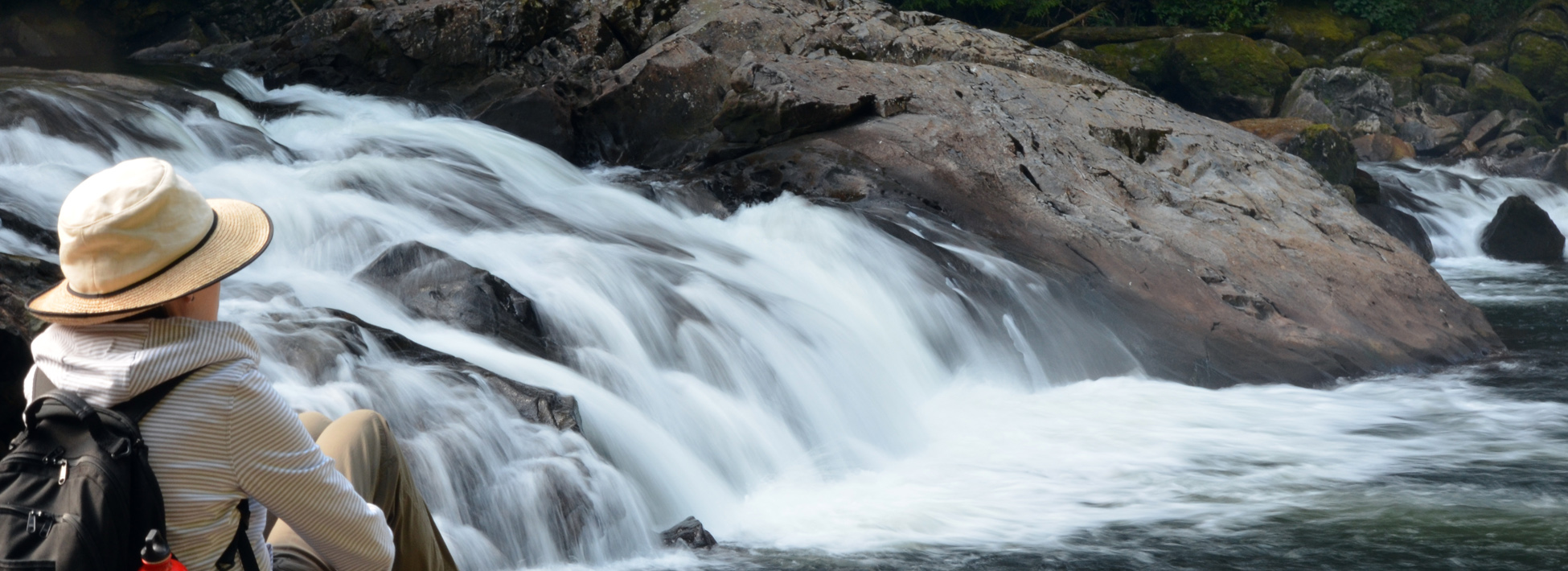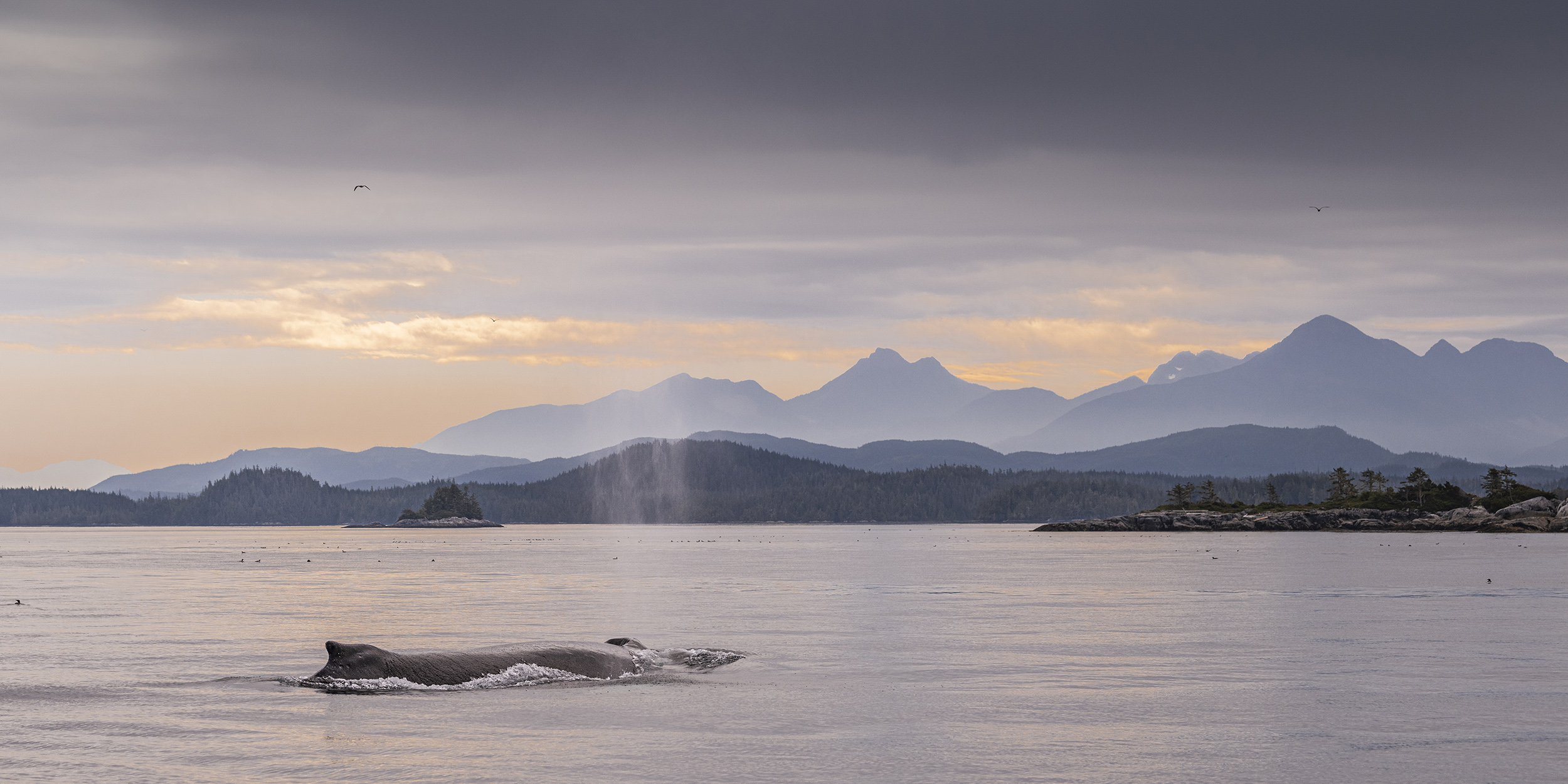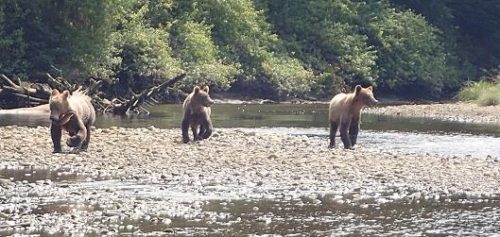 This is to be a grizzly bear family that is together for it’s third summer. It is one of the cubs that caught the salmon the mother is on the right. Not sure what has her interest as we were sitting in our skiff about forty meters in front of the cub with the salmon. Actually the guests were in the skiff I was sitting on the bow of the boat holding it in place on the river. The grizzlies did turn and cross the river to eat the salmon but also came back to catch several more while we watched from front row seats. The only time we got their attention was when I stood up to move the skiff away from their fishing area and the mother stopped and looked our way. I sat down and she went back to fishing. We are part of the background as long as we play by the rule – Do not move.
This is to be a grizzly bear family that is together for it’s third summer. It is one of the cubs that caught the salmon the mother is on the right. Not sure what has her interest as we were sitting in our skiff about forty meters in front of the cub with the salmon. Actually the guests were in the skiff I was sitting on the bow of the boat holding it in place on the river. The grizzlies did turn and cross the river to eat the salmon but also came back to catch several more while we watched from front row seats. The only time we got their attention was when I stood up to move the skiff away from their fishing area and the mother stopped and looked our way. I sat down and she went back to fishing. We are part of the background as long as we play by the rule – Do not move.
Bald Eagles

Bald Eagles are frequently sighted in our area. At times they can be seen in large numbers. This is usually where food supplies are high. For example this could be in areas with high concentrations of baitfish or along the rivers in the fall when the salmon are spawning. They are not migratory, but do move around with the food supply. As mentioned earlier when the salmon are spawning we often see many along the rivers, while there will be fewer along the coastline. With little need for camouflage their white head and tail feathers can be spotted easily. The female is slightly larger and her white head extends down a bit farther onto the body, but it is subtle. It takes these birds 4.5 – 5 years to acquire this unique plumage. As juveniles they are a brown colour. With exceptional eyesight and the ability to view 270 degrees they are understandably often seen in high perches and in trees near points and passageways.
Visit our Blog